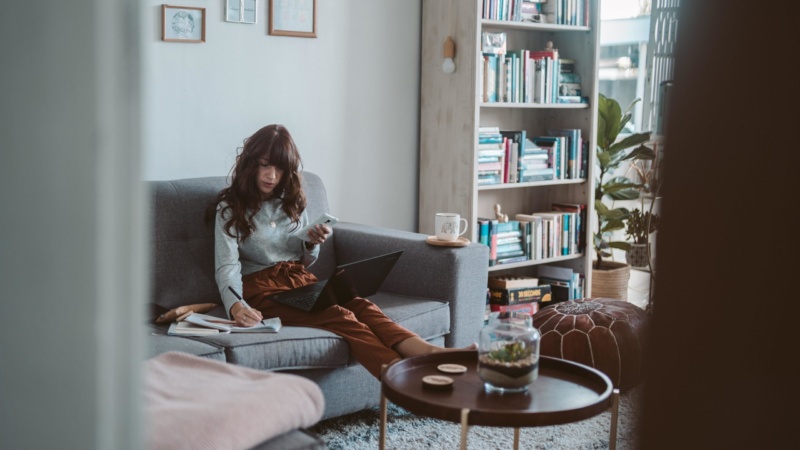The True Cost of WFH

Like most, March 2020’s emergency order hit our business like a tidal wave. And as we scrambled to set employees up with everything they needed, we succeeded in transitioning from a collaborative creative agency to a virtual office overnight.
We quickly implemented as many communications tools as we could to keep the team connected, all the while pivoting our processes and managing ever-changing revenue forecasts with a constant eye and ear out for financial support…
… to stay on top of new rules…
…seeking any and everything to keep the ship on course.
It wasn’t long before the COVID memes and bingo cards began to circulate, homemade banana bread and tie-dyed shirts started taking over everyone’s social feeds, and the “sweatpants for life” movement began to grow at an alarming rate.
A chorus of voices proclaimed that office culture was dead: COVID had finally proven that working from home was possible and even beneficial. No commute, more time with family, no overhead of costly office space, sweatpants and top buns 24/7—what’s not to like?
But while the luxury of working from your sofa is appealing to many, what we’re forgetting is that, for most of us, an office isn’t just an office: it’s a place where you spend most of your time.
A place where you build lasting relationships; where you learn and grow and have lively conversations.
A place to eat lunch with your peers, vent about the frustrations of work and life.
An office provides a routine.
A structure.
A community.
As you’re reading this, we’re now into our tenth month of a virtual office. You know, working from home, WFH, physical distancing – all the things. We’ve lived and worked through the creation of zones, watching the numbers go up, then level, then up again, following every protocol and hoping that we can eventually return to some level of normalcy.
The financial cost to businesses will take years to calculate. The emotional stress? Likely decades. But the true cost of this pandemic, and the monumental shift of how we live and work, is immeasurable.
For those of us watching the bottom line, working from home has very quickly moved from “how do we keep the lights on and the business running?” to “how do we keep our team connected?”
But that’s just one little query on a list of hundreds that run through my mind every night.
How can we continue to encourage collaboration through screens?
How can we keep the culture of the company intact when there is no one here?
How do we support new employees that haven’t yet built relationships?
How can we tell who needs help when we can’t actually see them?
When you’re with the same people every single day, you can tell who isn’t taking breaks for lunch, who is staying late, who comes in early, and who is always the last to leave.
You can see changes in how someone dresses, if they aren’t hanging in the lunchroom, or if they’ve been disconnected. All of that is lost through a screen. In the current situation, I get a 30-60 minute view of the “meeting version” of staff.
The screen is a barrier, not a window into how someone is actually feeling.
But the fact of the matter is, I don’t get to see everyone everyday like I used to and I hate it. Sure, we have check-ins and mental health resources, as well as a great team of people who constantly reach out to one another. But at the end of the day, there is no substitute for having everyone in one place.
Yes, there are certainly long term benefits to a work from home culture. Just think of how much we could be saving on office rent, supplies, coffee and snacks. But at what cost?
If your team doesn’t feel connected to the creative process, where is their joy and motivation coming from? As advanced as technology has become, it isn’t a replacement to the feeling we experience when collaborating with our peers in person.
So, I’ll keep coming in, checking the mail, saying hello to the handful of other people in the office (through masks and plexiglass, of course), and ensuring the plants have been watered and the empty desks have been dusted.
Why?
Because the cost of bringing us all back together under one roof is worth it.




